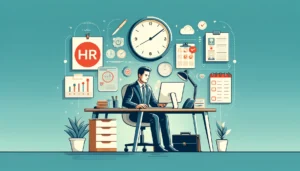Simple ways to create a mindful workplace
- 4 Min Read
When MVF’s founders got together in 2009 to create a smarter customer generation business, they were committed to building a company which is not just successful, but is also a really great place to work. But how do you create this?
- Author: Hannah Meredith
- Date published: Mar 27, 2018
- Categories

Creating a workplace that is accountable to its employees and values their health and wellbeing needs a programme focused not just on physical health, but mental health too. One of the tools we’ve used to support our employees mental health is mindfulness.
Here are three simple ways you can create a mindful workplace.
1) Understand mindfulness and its impacts on the workplace
The best place to start is educating managers about what mindfulness is, and its impact on productivity and resilience. Consider organising talks or group training sessions to introduce the topic.
At MVF, we ran a series called ‘Mindful Mid-Summer’. We held talks hosted by internal and external speakers, ran lunch time drop-in meditation sessions with apps like Headspace and had a pop up ‘Zen Zone’ with books and colouring in. This helped everyone in the business realise that being mindful doesn’t have to mean meditating alone in a corner, and that it can be different things to different people.
By the end of the month, survey results showed a 45% increase in team members who felt MVF supported their mental health; with 61% of respondents feeling more confident in talking about their mental health by the end of the programme.
There are some great tools out there with ways to be more present such as ‘Stress Less Cards – 50 Inspirational Mindfulness & Meditation Exercises’ or ‘The Little Pocket Book of Mindfulness’, and Business Minded also has some really great information on mindfulness in the workplace.
2) Create space for mindfulness and quiet time
It’s important to allocate spaces in the office that can become quiet zones. These are the places people can go to recharge, do deep work, concentrate on the task at hand or simply switch off for a few minutes. When we surveyed our teams, almost 80% felt they would benefit from having a permanent quiet zone in the office.
Fitting out these spaces with soft furnishings – sofas, cushions, rugs, blankets and plants – can help to create a cozy, warm and relaxing environment.
It’s a great idea to have educational resources on hand in these spaces; whether thats information on mindfulness apps to download or tips on finding the right environment for the right work mode. You can even have a small library area with books, or some noise cancelling headphones and a tablet with relaxing playlists or guided meditation apps.
3) Offer real assistance for mental health issues
Mindfulness might not be the answer to mastering mental health issues for everybody – although research shows it can alleviate anxiety and stress.
If you have any budget to put towards employee wellbeing, I would highly recommend you invest in an Employee Assistance Programme (EAP) which provides professional, confidential support for team members. Studies have shown that providing employees with access to short outcome counseling and advice can help minimise stress related absence, which indicates it is an effective method of helping people cope with mental health issues.
Another good investment is offering employees mental health days, where employees can take a day off, no questions asked, to recharge and reset. Having the support of the business to take a day to focus on mental health goes a long way in making employees feel comfortable bringing up any issues they may be experiencing.
Ultimately, the best way to create an open and mindful workplace to make sure your employees feel able to take time out to recharge and reset, find a comfortable place to do deep work or to approach a colleague or manager about any issues they are experiencing before they become a problem.
By Hannah Meredith- Health & Wellbeing Advisor, MVF







